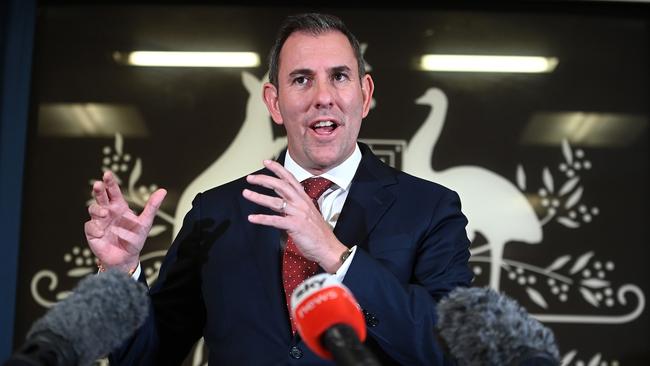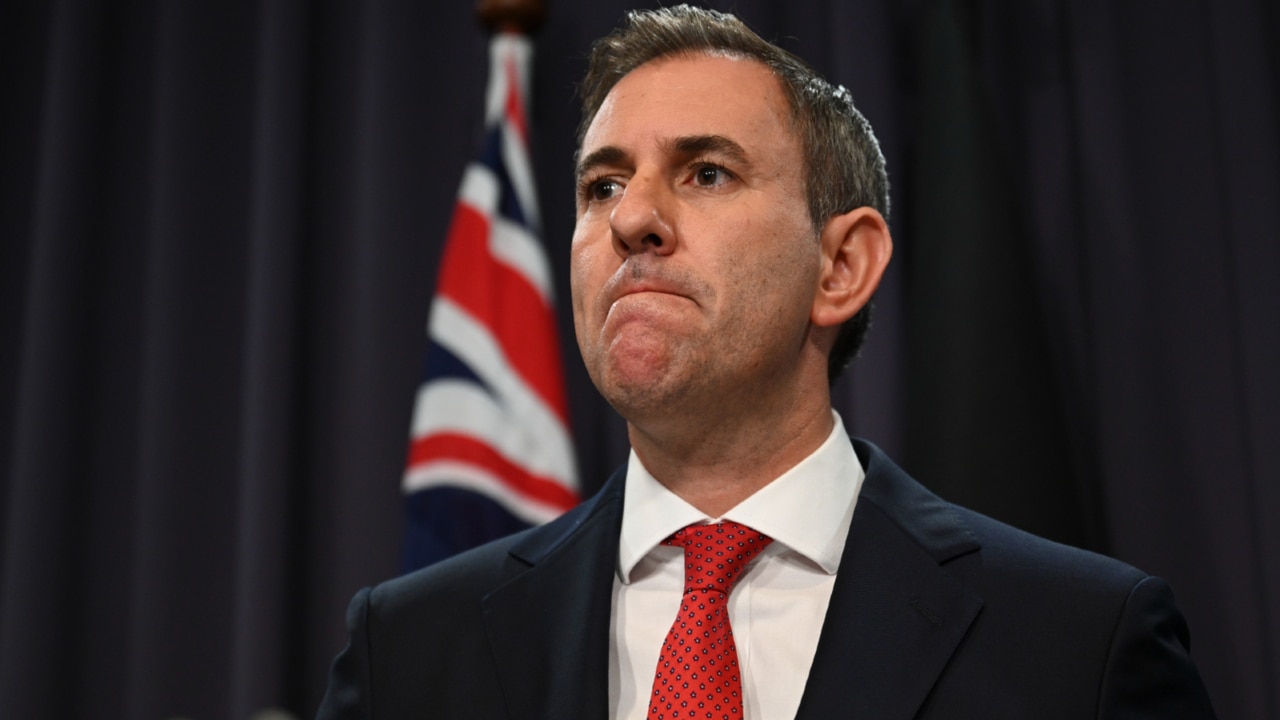Treasurer Jim Chalmers’ RBA brawl: warnings over fiscal fallout
A growing divide between Jim Chalmers and the RBA contains risks for public policy and traps for the central bank, with the Treasurer rejecting warnings government spending was contributing to prolonged inflation.

The growing divide between Jim Chalmers and the Reserve Bank risks poorer public policy outcomes and luring the independent board into a miscalculation, economists have declared, after the Treasurer rejected the central bank’s warnings that government spending was contributing to prolonged inflation.
Dr Chalmers disputed the RBA’s finding that the economy was running too hot and claimed Labor’s energy rebates were putting downward pressure on inflation despite the central bank clarifying the budget’s key cost-of-living measure would not lead to a faster reduction in the 4.35 per cent cash rate.
While Dr Chalmers did not accept that government spending was fuelling inflation, analysis by independent economist Saul Eslake showed state and federal government spending on goods and services increased by 11.9 per cent between the June quarter of 2022 and the March quarter this year. This is well up on the 3 per cent growth in private spending over the same period.
Mr Eslake noted that the analysis did not capture the full extent to which the government was contributing to increased spending in the economy, as household rebates only resulted in increased private spending.
“When governments give cash to households, in the GDP figures, that is not public demand. It ends up showing up as increased private demand,” he said.
RBA assistant governor Sarah Hunter told parliament’s cost-of-living committee on Wednesday “we just think the economy is running a little bit hotter than we saw previously” after Reserve Bank governor Michele Bullock pushed back the prospect of a rate cut to 2025.
Dr Hunter said recent announcements by state and federal governments were behind the RBA’s updated forecast for public spending to be growing by 4.1 per cent by June 2025 – up from the May forecast of 2.1 per cent.

AMP chief economist Shane Oliver told the committee he thought the RBA “should be cutting interest rates now,” but argued that increased government spending had cruelled that chance. “The Reserve Bank would probably be a lot closer to that if they didn’t revise up their growth forecast,” he said. “Why did they revise up their growth forecast? Partly because they got stronger public spending numbers in there. The RBA’s job would be a lot easier if they didn’t have the surge in government spending that’s been occurring over the last few years.”
George Washington University assistant professor Steven Hamilton told The Australian the RBA “has got its foot on the brake and the government has got its foot on the gas”. He also argued there were risks arising from a divide between the government and the central bank.
“When I put together the various statements in public by the RBA, they are starkly in contrast to the government’s claims – and I don’t think that’s good,” Dr Hamilton said.
“If the Reserve Bank needs to raise rates which they may need to … the Treasurer needs to give them the space to do that. Arguing with them, disagreeing with them, all of that makes it harder for the Reserve Bank to do its job.
“On one hand, they could force the bank’s hand in order to be more compliant. Or alternatively – and this is just as bad – in order to reassert their independence, the board and the governor and the bank might actually need to talk tougher and move interest rates to reassert their independence.”

Judo Bank chief economic adviser Warren Hogan said: “There’s certainly the risk that if there is a divergence in thinking between the RBA and the government … it raises the risk we will see poor public economic policy making. If the policy maker doesn’t understand the problem, there is no policy solution that will help.”
On Wednesday, the Australian Bureau of Statistics released its Living Cost Indexes showing employee households had recorded the largest annual rise in living costs of all household types, with a rise of 6.2 per cent, well above the annual inflation rate of 3.8 per cent. The living cost indexes include mortgage interest charges, which are not factored into CPI.
Speaking on ABC radio on Wednesday, Dr Chalmers responded to the RBA’s upward revision of GDP growth by saying it was “hard to sustain an argument that the economy is running too hot or that people have too much spare cash, given all of the data and all of the feedback that we get, which shows that’s not the case”.
He also argued that the RBA forecasts showed Labor’s cost-of-living policies were “helping to push inflation down in the near term – not up”.
Dr Hunter said federal and state energy rebates were causing volatility in the headline inflation rate, leaving the RBA having to look past those “temporary” measures when considering interest rates.
“They (the rebates) will have an impact this year,” she said. “They’ll have an impact next year. But in terms of being a sustained return to target, that’s not something that we can see coming from those particular policies because they already legislated for one year.”
The RBA forecast Labor’s cost-of-living subsidies would drive headline inflation below 3 per cent in the next year. But it also forecast that headline inflation would then rise from 2.8 per cent in June next year to 3.7 per cent in December when the energy rebates ended.
Dr Chalmers rejected suggestions government spending was keeping inflation higher for longer. “Budget spending is not the primary determinant of prices in the economy, but we can be helpful, and we are being helpful, with the design of our cost-of-living policies which help us get back to targets sooner,” he said.

In its August statement on monetary policy, the RBA stated: “The stronger outlook for public demand reflects ongoing spending and recent announcements by federal and state and territory governments. Underlying inflation is forecast to return to the target range of 2–3 per cent in late 2025 and approach the midpoint in 2026. This is a slightly slower return to target than forecast in May and is due to greater inflationary pressures in the economy. In part, this owes to a stronger outlook for domestic demand, led by higher public demand.”
Former RBA board member Warwick McKibbin said he agreed with the RBA governor rather than the Treasurer: “It is excess demand that is the problem. Government policies are adding to excess demand.”





To join the conversation, please log in. Don't have an account? Register
Join the conversation, you are commenting as Logout